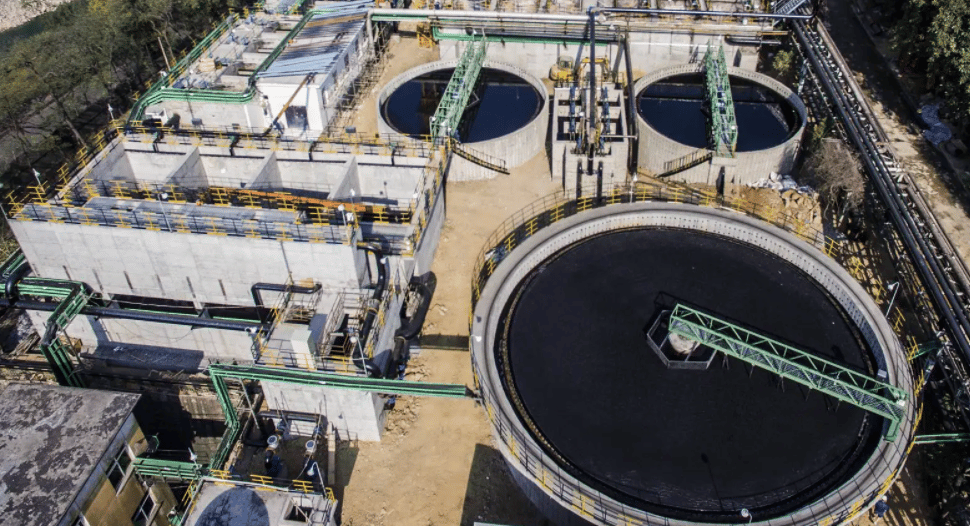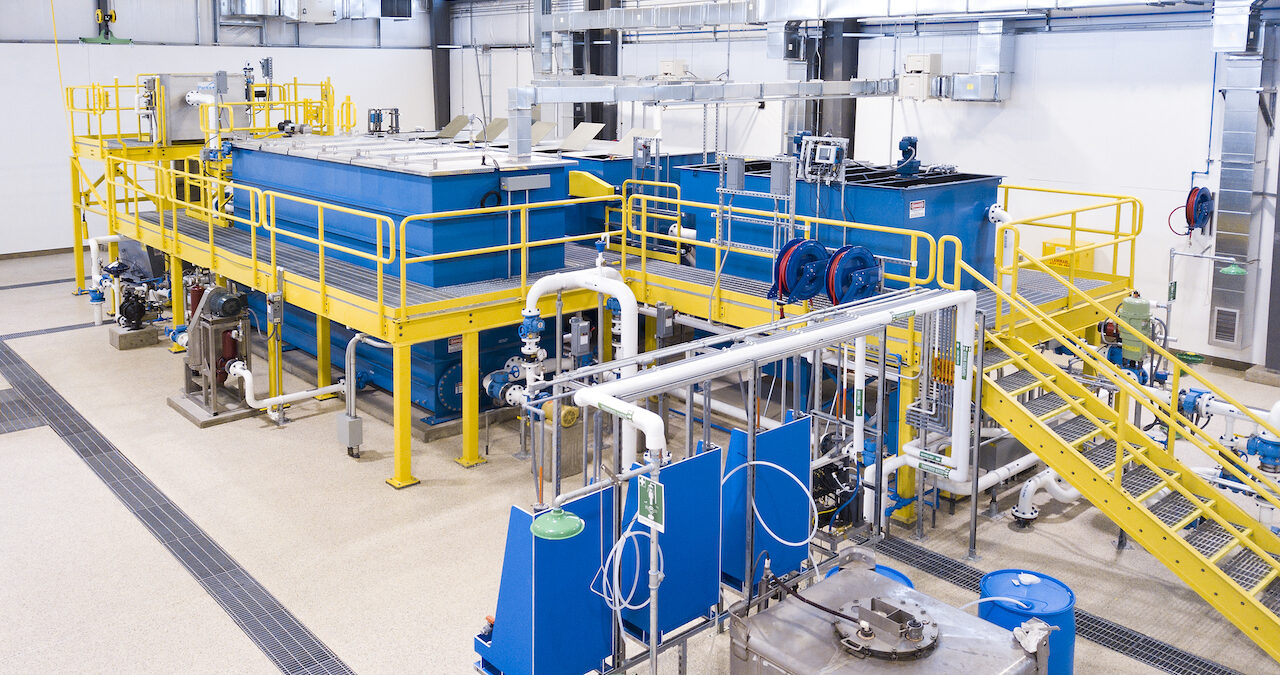Industrial Waste Water Treatment-- Lasting Solutions for Industrial Water Administration
Industrial Waste Water Treatment-- Lasting Solutions for Industrial Water Administration
Blog Article
Obstacles and Solutions in Hazardous Waste Water Treatment
The treatment of commercial wastewater offers a complex range of difficulties, varying from rigid regulatory compliance to the complexities of price monitoring and technological constraints. The variability in waste structure better makes complex the effectiveness of standard therapy approaches, often resulting in escalated operational expenditures.
Regulatory Compliance Difficulties
How can industrial facilities navigate the complex landscape of regulative compliance in wastewater treatment? The regulative framework governing wastewater monitoring is complex, frequently varying by territory and kind of sector. Facilities should adhere to government, state, and regional regulations that determine effluent top quality criteria, discharge restrictions, and surveillance demands. Failing to abide can lead to serious penalties, including fines and functional closures.
To effectively handle these conformity challenges, facilities should implement robust tracking and reporting systems that ensure real-time information collection and analysis. Regular audits and risk analyses can identify prospective compliance voids, enabling for aggressive changes in treatment procedures. Staff member training programs concentrating on governing expertise and ideal methods are essential to cultivate a culture of conformity within the organization.
Furthermore, involving with governing firms can give useful understandings and clarify unclear laws. Facilities may additionally take advantage of seeking advice from ecological experts who specialize in wastewater therapy compliance, guaranteeing that they remain abreast of advancing guidelines. By taking on these approaches, commercial facilities can not only satisfy compliance requirements yet likewise improve their functional efficiency and environmental stewardship.
Cost and Financial Barriers
Browsing governing conformity in wastewater treatment usually provides significant economic difficulties for commercial centers. The expenses associated with executing required treatment modern technologies, keeping conformity with stringent guidelines, and managing functional expenses can be discouraging. Numerous organizations deal with high first resources expenditures for the construction or upgrading of wastewater treatment plants, which might stress budget plans, particularly for tiny and medium-sized ventures.
Moreover, continuous functional prices, consisting of maintenance, labor, and chemical inputs, contribute to the financial problem. The unpredictability of fluctuating power rates and the prospective need for additional financial investments to fulfill advancing policies intensify these economic stress. In most cases, the absence of economic rewards or assistance from federal government bodies makes it a lot more difficult for organizations to justify financial investments in innovative therapy systems.
Additionally, the economic stability of wastewater therapy remedies is typically examined, especially for sectors with limited earnings margins. It is vital for commercial centers to check out cost-effective methods, such as embracing ingenious funding options, engaging in partnerships, and leveraging arising modern technologies that can help minimize these financial barriers while guaranteeing conformity with ecological requirements.

Technical Limitations
Countless technical restrictions impede the efficiency of industrial wastewater treatment procedures. One substantial obstacle is the insufficiency of existing treatment modern technologies to address complex pollutants. Many standard techniques, such as triggered sludge and chemical rainfall, fight with the elimination of emerging toxins, consisting of pharmaceuticals and microplastics. This limitation often leads to the discharge of improperly treated water, which can have destructive environmental impacts.
Furthermore, the scalability of therapy modern technologies postures an obstacle. While some sophisticated techniques, like membrane layer purification or innovative oxidation, show guarantee in regulated environments, their implementation on a bigger scale can be prohibitively pricey and technically difficult. Maintenance and operational intricacies additionally complicate the fostering of these systems, specifically for smaller sectors with limited technological expertise.
The assimilation of real-time read review surveillance innovations likewise continues to be not enough in several treatment facilities. Without effective tracking systems, drivers can not properly evaluate therapy effectiveness or find potential failings, leading to irregular effluent quality. As a result, resolving these technological restrictions with r & d, along with investment in cutting-edge solutions, is essential for enhancing the efficiency of commercial wastewater therapy and making sure regulatory compliance. Industrial Waste Water Treatment.
Variability in Waste Structure
In the world of industrial wastewater treatment, the variability in waste make-up offers a powerful difficulty. Industries generate wastewater with varied characteristics, influenced by variables such as manufacturing procedures, basic materials, and operational practices. This diversification makes complex the therapy process, as traditional systems usually have a hard time to efficiently resolve the large range of pollutants existing.
For instance, wastewater from food processing might have high degrees of natural issue, while effluents from chemical manufacturing might consist of hefty steels and dangerous materials. This variation requires versatile treatment methods to make certain compliance with environmental policies and shield public wellness. In addition, variations in waste composition can happen with time, affected by adjustments in manufacturing schedules, maintenance tasks, or the intro of new products.

Cutting-edge Therapy Solutions
Innovative therapy solutions are vital for addressing the intricacies of commercial wastewater administration. Standard methods usually fall brief in effectively removing a large range of contaminants, particularly in facilities with varied effluent streams. Recent innovations concentrate on integrating innovative technologies to improve treatment performance and sustainability.
One appealing approach is the usage of innovative oxidation procedures (AOPs), which leverage effective oxidants to break down organic pollutants. AOPs, including photocatalysis and ozonation, can considerably lower toxic materials and enhance effluent quality. Additionally, membrane bioreactor (MBR) innovation has actually obtained traction, integrating organic treatment with membrane layer purification, leading to high-grade effluent and minimized footprint.
An additional cutting-edge solution is the implementation of resource healing systems. Strategies like anaerobic digestion not only deal with wastewater however also create biogas, which can be taken advantage of as a renewable resource source. Additionally, the adoption of expert system and maker understanding designs can enhance therapy procedures by forecasting variants in wastewater composition, therefore boosting operational effectiveness.
These cutting-edge solutions not just address regulatory compliance yet likewise promote ecological sustainability, leading the way for an extra reliable and durable industrial ecological community.
Conclusion
In final thought, resolving the obstacles of industrial wastewater therapy calls for a complex technique that incorporates regulative compliance, expense administration, and technological advancements. A commitment to constant improvement in treatment methodologies will eventually contribute to the efficient administration of industrial wastewater and environmental security.
The therapy of industrial wastewater offers a complex array of obstacles, varying from rigid regulatory conformity to the ins and outs of price monitoring and technological limitations. Industrial Waste Water Treatment.Browsing governing conformity in wastewater therapy usually offers considerable economic challenges for commercial facilities. Dealing with these technical limitations through study and development, along with financial investment in innovative solutions, is essential for enhancing the efficiency of commercial wastewater treatment and making Find Out More sure regulative conformity
Wastewater treatment centers should invest in robust tracking systems and versatile treatment innovations qualified of suiting varying influent features.In verdict, resolving the challenges of commercial wastewater treatment requires a multifaceted technique that integrates regulative conformity, cost administration, and technological improvements.
Report this page